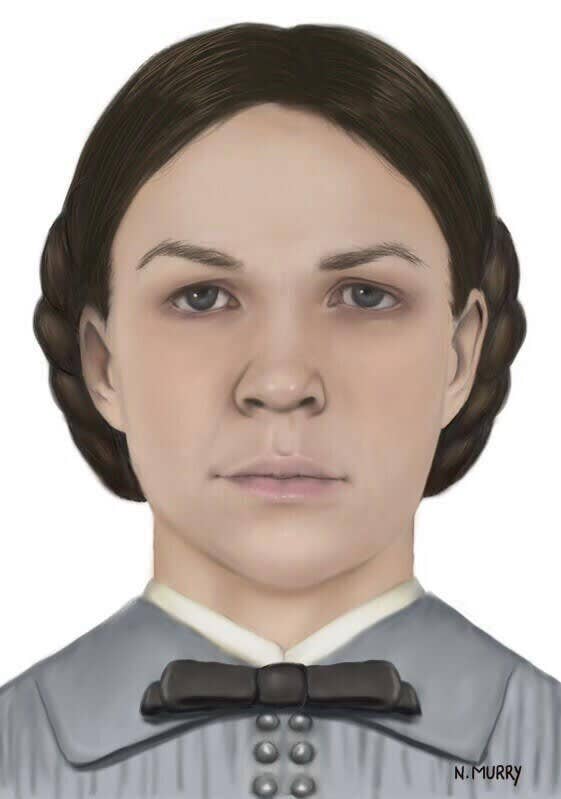After being found in the walls of an Illinois home in 1978, a skull has finally been identified as belonging to Esther Granger, a 17-year-old Indiana teen who died over 150 years ago. The discovery was made during renovations in Batavia and the skull was eventually sent to the coroner’s office in March 2021 for further investigation. Through DNA analysis, authorities were able to determine Esther’s identity and piece together her tragic story. Born in 1848, Esther married at a young age and tragically passed away after giving birth to her first child in 1866 due to complications during childbirth.
During a press conference held by the coroner’s office, officials revealed their breakthrough in identifying Esther’s remains through DNA evidence and genealogical research. The case was solved by constructing a family tree and tracing down Esther’s great-great-grandson, Wayne Svilar, a retired sergeant from Portland, Oregon. Svilar initially had doubts about the news but eventually traveled to the internment where he gave a heartfelt eulogy for his long-lost ancestor. Esther was laid to rest in the West Batavia Cemetery with an engraved stone marker, finally bringing closure to her family after over a century.
Coroner Bob Russell speculated that Esther may have been a victim of grave-robbing, which was common during that era due to the lucrative nature of the practice. He explained that grave robbers could earn a significant sum by stealing bodies and selling them for medical research or other purposes. The circumstances surrounding Esther’s remains being found in the walls of the Illinois home remain a mystery, but Russell’s theory provides a plausible explanation for how her skull ended up there after all these years. The identification of Esther’s remains has shed new light on an old case, highlighting the importance of forensic science and technological advancements in solving cold cases.
The discovery of Esther Granger’s remains and the subsequent identification process have brought closure to her descendants and allowed them to honor her memory properly. Svilar, as a direct descendant of Esther, was instrumental in confirming her identity and providing a eulogy at her final resting place. The coroner’s office’s diligent efforts in tracing Esther’s lineage and establishing her identity through DNA forensics have been crucial in solving this decades-old mystery. Thanks to modern science and investigative techniques, the Granger family now has the opportunity to pay their respects to their long-lost relative and ensure that she receives a proper burial after all these years.
The case of Esther Granger serves as a testament to the power of DNA analysis and genealogical research in solving cold cases and identifying unknown remains. The coroner’s office’s dedication to unraveling the mystery of the skull found in the walls of the Illinois home highlights the importance of forensic science in bringing closure to families and victims of long-forgotten tragedies. By piecing together Esther’s past and establishing her identity, authorities have been able to provide answers to questions that have lingered for decades. The identification of Esther Granger’s remains has not only solved a historical mystery but also brought comfort and closure to her descendants after generations of uncertainty.


